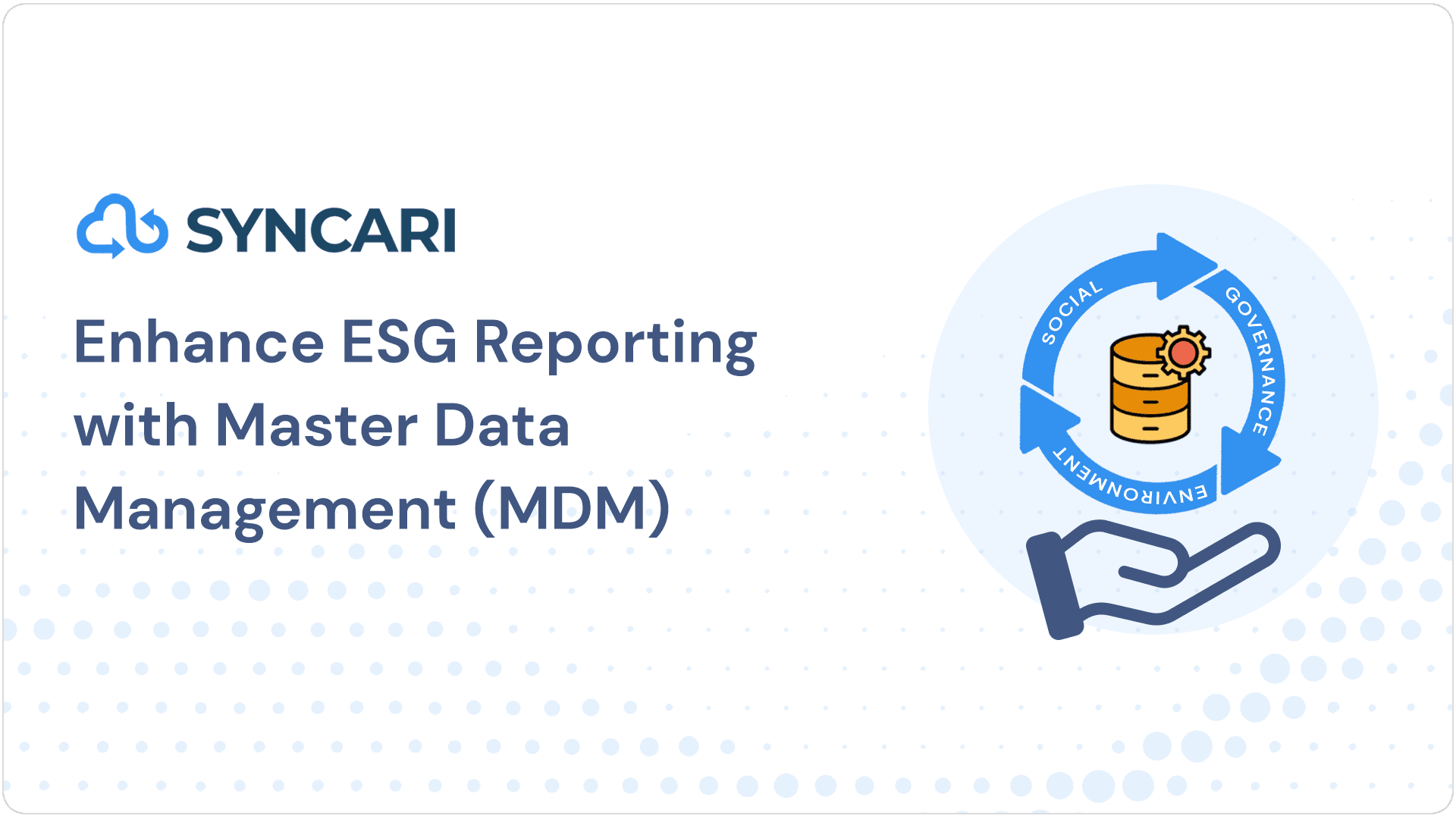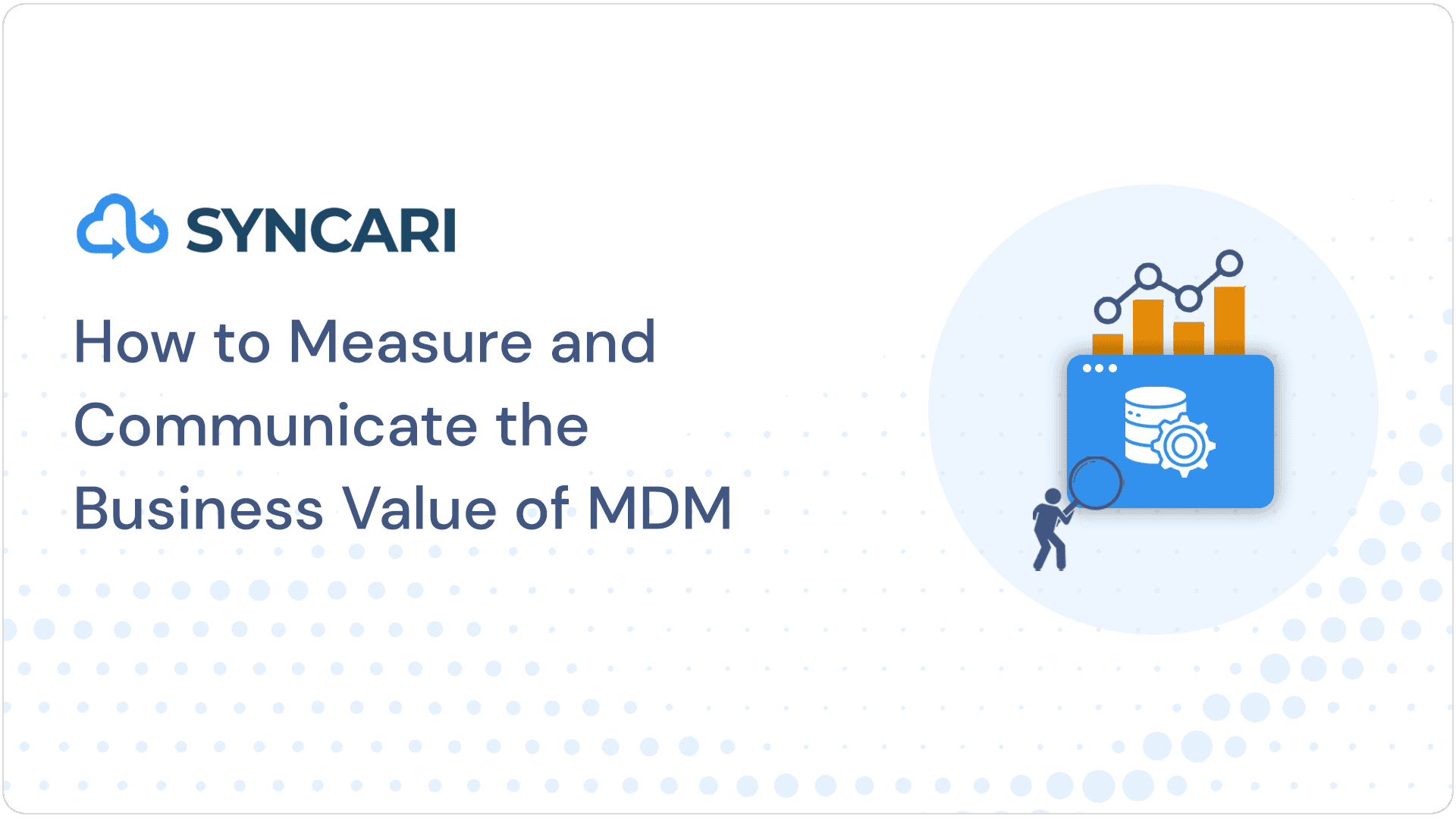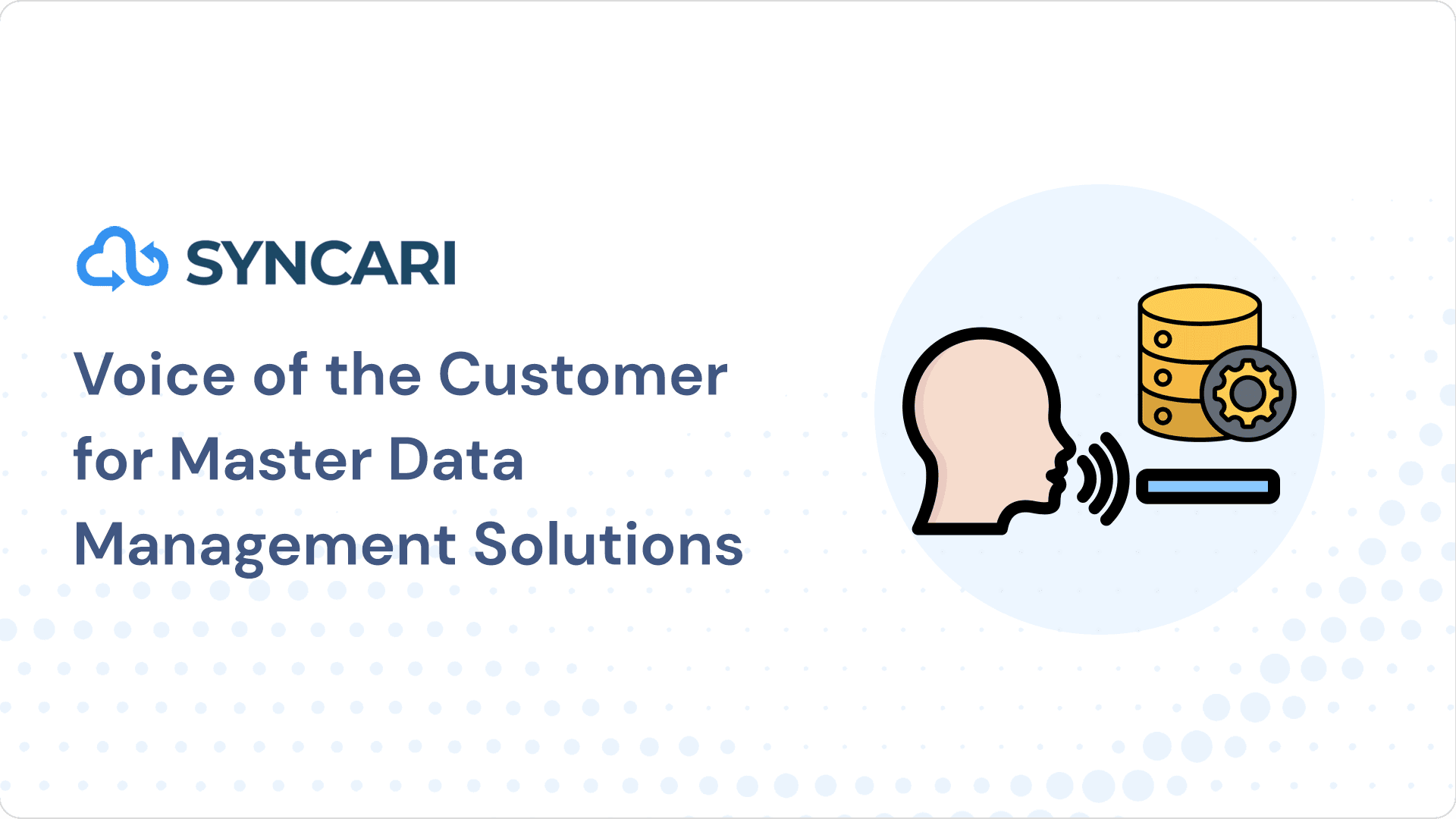According to a report by MarketsandMarkets, the global integration platform as a service (iPaaS) market will grow from $3.7 billion in 2021 to $13.9 billion by 2026.
With the rising demand in the market, multiple players have emerged to offer dedicated integration solutions. But if we filter out the best, MuleSoft and Jitterbit can’t escape the list.
In this article, we’ll compare the two popular data integration platforms to assist you in making an informed decision.
So, are you ready to learn more about MuleSoft vs Jitterbit?
Let’s dive in!
What is MuleSoft?
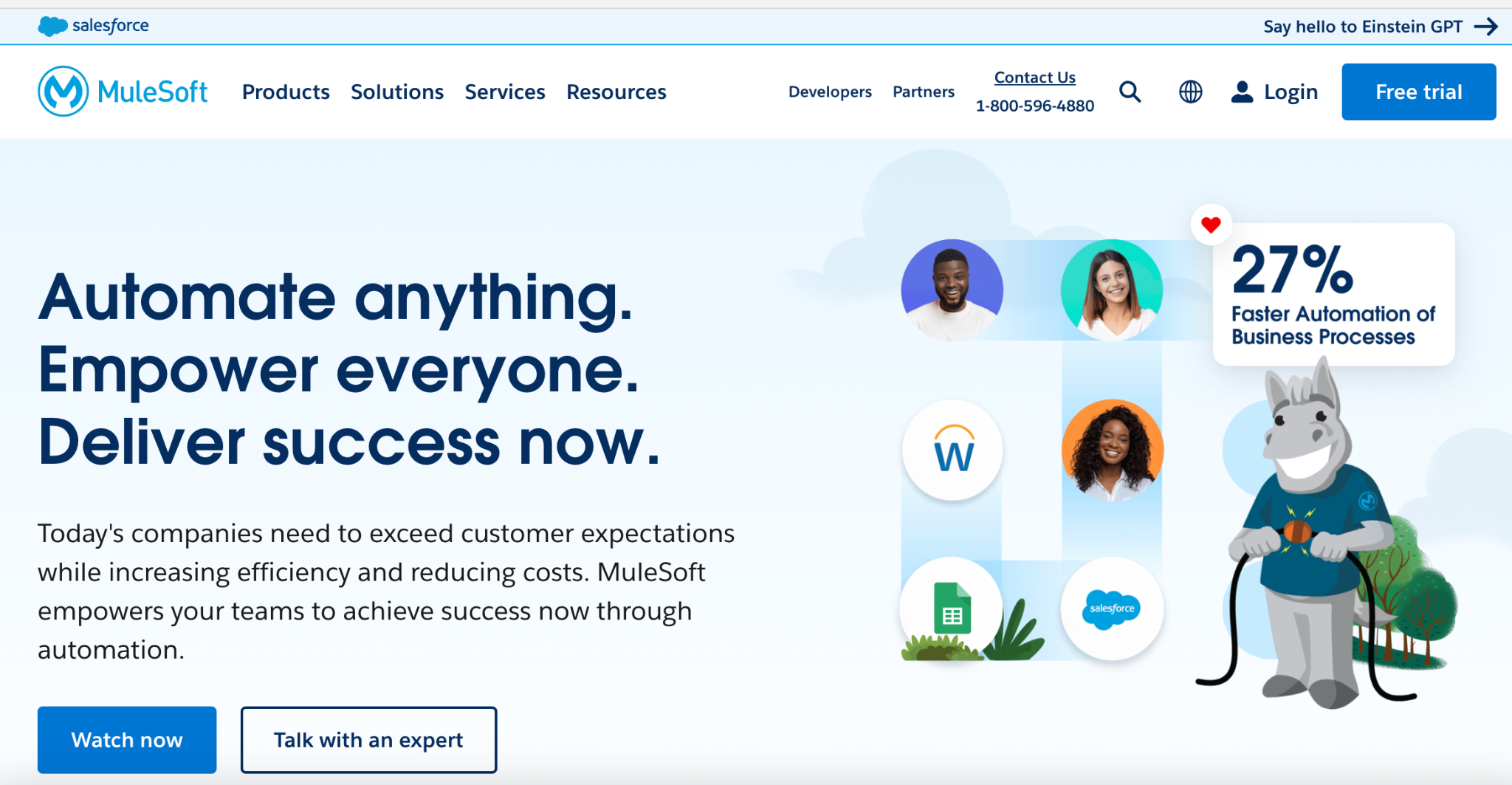
MuleSoft’s Anypoint Platform is a dedicated integration platform that connects devices, data, and applications with cloud or on-premises environments.
It was founded in 2006 and was acquired by Salesforce in 2018. It provides a unified platform for API-led connectivity, enabling organizations to expose their assets as APIs and reuse them to build new applications and integrations.
You can access its variety of services and components like:
- Exchange – Repository of pre-built connectors, templates, and other integration assets
- Studio – Development environment for designing and building Mule applications
- Connectors – MuleSoft offers a wide range of pre-built connectors that enable integration with various applications and systems, such as Salesforce, SAP, Oracle, etc.
- Management Center – Centralized platform for managing and monitoring Mule applications and APIs
- Design Center – Collaborative environment where teams can design flowcharts, document, and manage APIs and integration flows
Holding a significant portion in the iPaaS category, MuleSoft’s pre-built connectors and templates are used by leading organizations globally.
It can help your business simplify integration processes, improve operational efficiency, and accelerate innovation.
Here are some of its key features:
MuleSoft Features
It enables you to design, document, and test APIs using an intuitive interface. With the API Designer, you can create API specifications using RAML (RESTful API Modeling Language), making it easier to define and document RESTful APIs.
It includes auto-discovery, live API documentation, mocking, and schema validation.
MuleSoft’s Anypoint Platform enables companies to unify their integration efforts by creating a single integration point that supports multiple applications. This provides you with the ability to scale out quickly and efficiently.
You can create a single integration point that connects all your applications, systems, and data sources to ensure that the data flows freely across your organization.
It can also reduce the complexity and cost of their integration efforts. Instead of building and maintaining multiple integrations between different applications, you can leverage the platform to create a centralized integration architecture for multiple applications.
You can easily convert data between different formats and structures using the data transformation language included in the platform.
With DataWeave, you can convert data between formats such as JSON, XML, CSV, and Java objects, and perform complex data mapping and filtering operations.
Its simple syntax makes it easy to transform data in real-time as it moves through the MuleSoft Platform.
MuleSoft’s Anypoint platform provides a cohesive integration solution that prioritizes security and governance throughout the entire API lifecycle.
The platform adheres to industry-standard security measures and logging requirements by automatically applying a prescribed set of security policies across all APIs.
This approach enables API owners to focus on developing and implementing APIs quickly, without worrying about the security of the data being transmitted across different applications, devices, platforms, and systems.
With MuleSoft’s Anypoint platform, businesses can rest assured that their integrations are secure and compliant with industry standards.
MuleSoft offers users a variety of deployment options to fit their specific needs, including on-premises deployment through Customer Hosted, cloud-based deployment through CloudHub, and hybrid deployment.
The platform also supports Kubernetes-based deployment through Runtime Fabric Manager, providing greater flexibility in deployment options.
In addition, MuleSoft’s Anypoint platform can be deployed in 12 different AWS regions, giving users greater access to global deployment options.
The platform provides monitoring of APIs, extracting real-time insights and metrics to help users better understand how their integrations are performing and make informed decisions for optimizing their operations.
Advantages of MuleSoft
- The flexibility has been great overall.
- MuleSoft offers annual contracts tailored to the features and volume required by each customer.
- MuleSoft works very great with Salesforce and CRMs.
- Its DevOps support is satisfactory.
- Create a centralized integration architecture that supports multiple applications and systems.
Disadvantages of MuleSoft
- Setting up, configuring, and maintaining can be complex and difficult.
- MuleSoft can be expensive for small and medium-scale businesses.
- You can face challenges while attempting to customize certain aspects of the platform.
- Integration with legacy systems or certain applications not supported by the platform can be troublesome.
Now that you know in-depth details about MuleSoft, let’s look into Jitterbit.
What is Jitterbit?
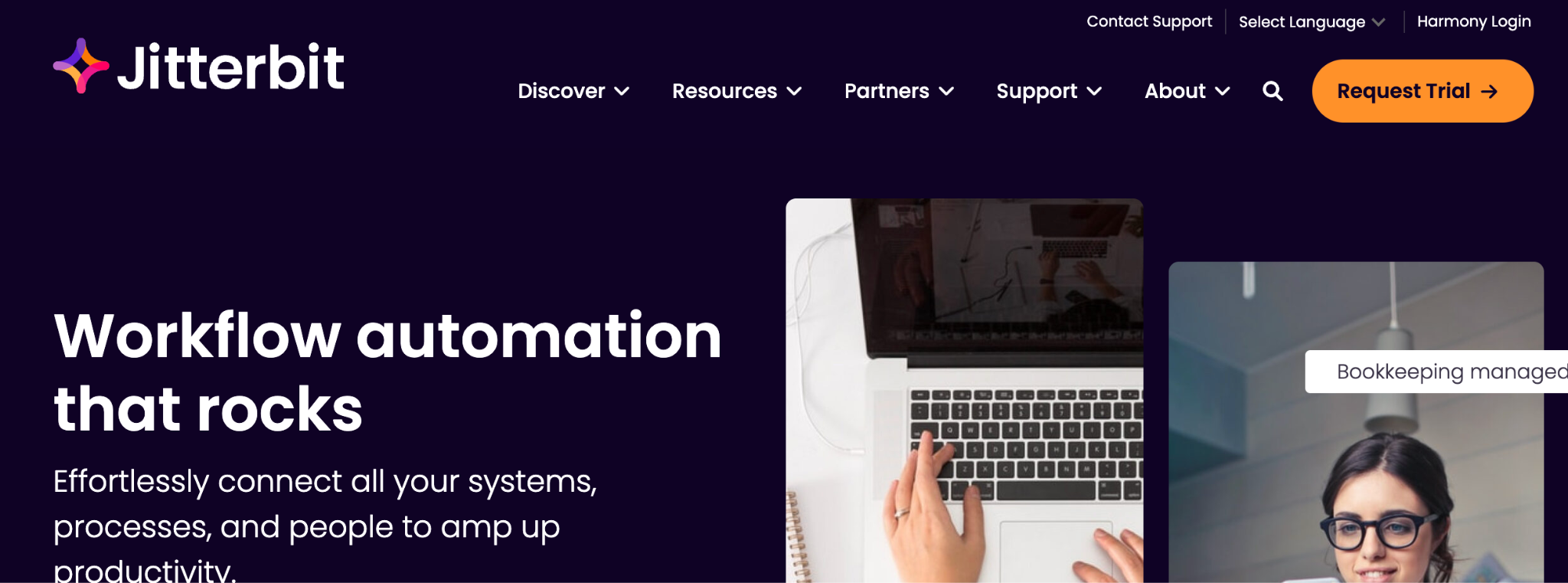
Jitterbit provides a comprehensive integration and workflow automation platform that enables businesses to enhance their connectivity and scalability.
It is an advanced point-to-point cloud-based software integration platform, allowing you to transfer data easily and securely between technologies.
The swiftness can help you streamline your processes and deliver projects in days rather than months.
The company aims to simplify complex processes, allowing organizations to operate more efficiently, faster, and with increased satisfaction.
Despite offering a range of advanced features, the platform also excels at the fundamental ETL (Extract, Transform, Load) functionality.
Here are a few of its features:
Jitterbit Features
Accelerate project timelines
With Jitterbit’s integration platform, you can connect applications and APIs in just a few days, which would otherwise take months. This enables you to streamline projects and reduce delivery timelines significantly.
Enterprise-wide project management
Jitterbit’s web management console (WMC) allows administrators to manage integration projects remotely, making it easier to oversee enterprise-wide projects.
The WMC provides a comprehensive set of tools and features that enable administrators to monitor integration performance, track system health, manage users, and perform other critical tasks.
Intuitive integration creation
Its graphical design studio offers an intuitive drag-and-drop feature, which allows you to create integration processes effortlessly.
It eliminates the need for manual coding, making integration creation a hassle-free experience. Additionally, the intuitive interface helps reduce the learning curve, enabling you to create integration processes easily and quickly.
Proactive issue management
Jitterbit’s platform includes easy-to-use dashboards and alert settings, which help you stay on top of issues and resolve them proactively before they become significant problems.
The dashboard displays critical information about the status of your integrations, enabling you to monitor performance in real-time.
Taking a proactive approach to issue management can reduce downtime and ensure your integration projects run smoothly and efficiently.
Connect all data systems
Jitterbit’s integration platform can seamlessly connect all your data systems, whether on-premise, cloud-based, or SaaS.
This capability enables you to integrate your entire technology stack, providing a unified view of your business data.
Jitterbit helps you eliminate data silos and streamline your business processes by connecting all your data systems.
Advantages of Jitterbit
- Its no-coding approach simplifies the configuration and management.
- You can use Jitterbit’s graphical tool, which allows transformation and transportation between data types and sources.
- It can help you connect applications and APIs quickly and securely, reducing project timelines from months to a few days.
- You can connect your data systems, including on-premise, cloud-based, or SaaS, to get a unified view of your business.
Disadvantages of Jitterbit
- It requires additional development or integration work to connect certain systems.
- It relies on connectivity between systems, which may be affected by internet connectivity issues or reasons beyond Jitterbit’s control.
- It’s not cost-effective.
- The learning curve is complex and requires technical expertise to achieve the desired outcomes.
Now let’s understand the similarities for a better understanding between MuleSoft vs Jitterbit debate.
How are MuleSoft and Jitterbit Similar?
MuleSoft and Jitterbit are integration platforms that enable businesses to connect various applications and systems across their technology stack.
That’s not it.
They offer various integration capabilities like connecting to cloud-based applications, on-premise systems, and data sources and managing data flows and API connections.
You can use both platforms’ pre-built connectors and templates that make connecting various applications and systems easier without requiring extensive coding or technical expertise.
There are also similarities in the security features, like role-based access controls, encryption, and compliance with industry standards.
Apart from these solid similarities, there may be differences in the integration, connectivity, and UI, among others. Have a look.
How are MuleSoft and Jitterbit Different?
You must understand the MuleSoft vs Jitterbit differences to determine which is best for your business. Here are some ways how they differ:
| Feature | MuleSoft | Jitterbit |
|---|---|---|
| Integration approach | API-led connectivity approach, where applications and data are exposed through a set of APIs | Point-to-point integration approach, where applications are connected through point-to-point connections |
| ETL capabilities | Limited ETL capabilities | Robust ETL capabilities |
| Deployment options | On-premise, cloud-based, and hybrid deployment options | Cloud-based deployment only |
| Connectivity | Wide range of connectors and adapters supporting a broad range of protocols and applications | Limited number of connectors and adapters |
| User interface | Comprehensive and complex UI, which can be overwhelming for new users | User-friendly and intuitive UI, designed to be easy to use for both developers and non-technical users |
| Cost | Expensive, with the complex pricing structure | More affordable, with simple pricing structure |
| Support | Comprehensive support resources and a large community of users | Limited support resources and a smaller user community |
| Scalability | Highly scalable, with the ability to handle large volumes of data and transactions | Limited scalability, with potential performance issues when handling large volumes of data |
These MuleSoft vs Jitterbit differences can help you decide which suits your business needs and preferences.
But if you want to choose a better solution that offers comparable or even superior features and capabilities, you can explore alternatives like Syncari.
Why Choose Syncari after analyzing MuleSoft vs Jitterbit ?
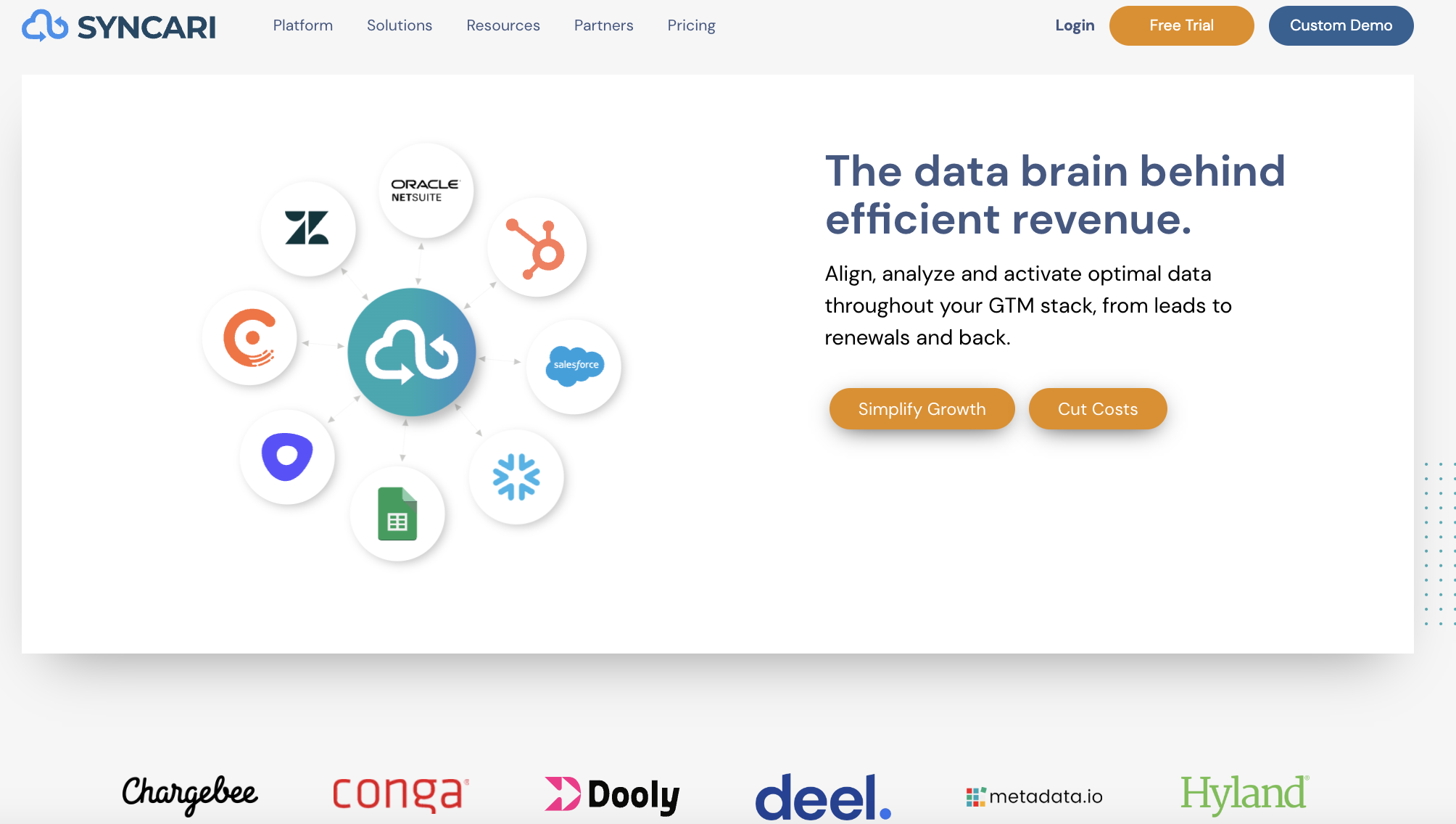
With Syncari, you can unify multiple CRMs and keep them in sync using our patented stateful multidirectional sync. You can manage your contacts, accounts, and apps without migration across all connected CRMs.
With our patented stateful, multidirectional sync, you can keep CRMs in sync (meaning contacts, accounts, and apps are managed/unified across all connected CRMs).
Here’s why you might choose Syncari after analyzing the MuleSoft vs Jitterbit debate:
Syncari offers robust support for data warehouses, making it easier to integrate data from various sources into your warehouse.
With Syncari, users can connect to a variety of different data sources, including databases, cloud-based applications, and even flat files, and then map and transform data to fit their specific warehouse schema.
It allows you to create custom connectors, enabling you to connect to any application or system, regardless of whether a pre-built connector is available.
Creating custom connectors in Syncari is a straightforward process, thanks to its intuitive visual interface and drag-and-drop functionality.
You can easily map the data fields and endpoints of the target system, and define the parameters for the connector, including authentication and data transfer protocols.
The platform uses advanced integration technology, such as REST APIs, webhooks, and message queuing, to provide reliable and scalable data integration.
By leveraging these advanced integration technologies, Syncari provides a reliable, scalable, and flexible data integration platform.
Syncari offers a wide range of integration templates, making it easier to connect to popular applications and systems, such as Salesforce, Marketo, and HubSpot.
By using Syncari’s integration templates, you can reduce the time and effort required to set up and configure integrations, and minimize the risk of errors or misconfigurations.
Syncari provides a comprehensive approach to unifying data across multiple systems. This is a powerful upgrade from traditional iPaaS and ETL solutions, which simply copy/paste data from one source to another. Syncari instead enables you to manage data according to your business logic, and maintains it for you with minimal oversight.
Request a demo for the only full-stack data automation platform that aligns, analyzes, activates, and unifies your data and keeps your people, systems, and processes in sync.
Advantages of Syncari
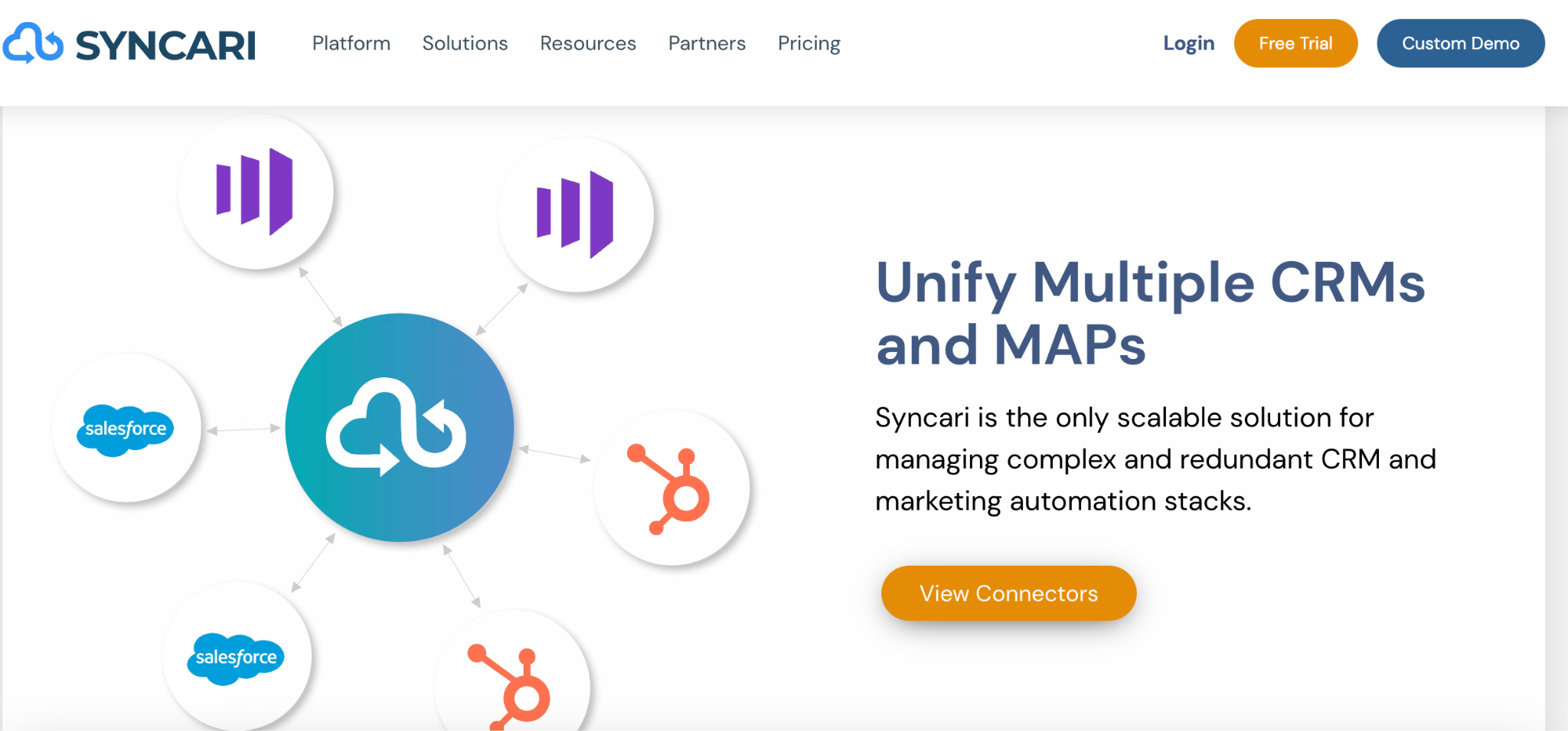
- By automating data migration, Syncari eliminates the need for manual data entry and reduces the risk of errors during data migration.
- Syncari’s CRM sync solution enables businesses to seamlessly migrate data without interrupting business operations. It can help you with a smooth and efficient transition to a new system, minimizing downtime and ensuring business continuity.
- It automatically cleans and standardizes your data, ensuring it is accurate, up-to-date, and consistent across all systems.
- Syncari integrates with many systems, including CRMs, ERPs, marketing automation tools, etc. This enables you to connect and integrate data across multiple systems, streamlining your workflows and improving operational efficiency.
- It can scale up or down based on your business needs, making it suitable for businesses of all sizes.
- You can eliminate manual data entry, reconciliation, and maintenance to focus on more strategic initiatives.
Disadvantages of Syncari
- As businesses become more reliant on Syncari for their data workflows it makes it difficult or costly to switch to another platform.
So, are you ready to proceed with your integration process?
Takeaway
MuleSoft and Jitterbit are powerful integration platforms that can help businesses connect their systems and automate their workflows.
However, we would like to recommend Syncari as a superior option.
Because of its:
- Patented multi-directional solution
- Multiple integration templates
- Custom connector creation
- Advanced cleaning and standardization capabilities
- Cost-effectiveness
Syncari is a cloud-based platform that offers data automation, synchronization, and management solutions.
It is designed to help businesses automate and streamline their data operations and workflows, and it supports integrations with various third-party applications and systems.
Syncari customers keep data in stateful sync across every stage of the customer journey, from leads to renewals and back.
So, what’s making you wait?
Request a demo to see it in action.
